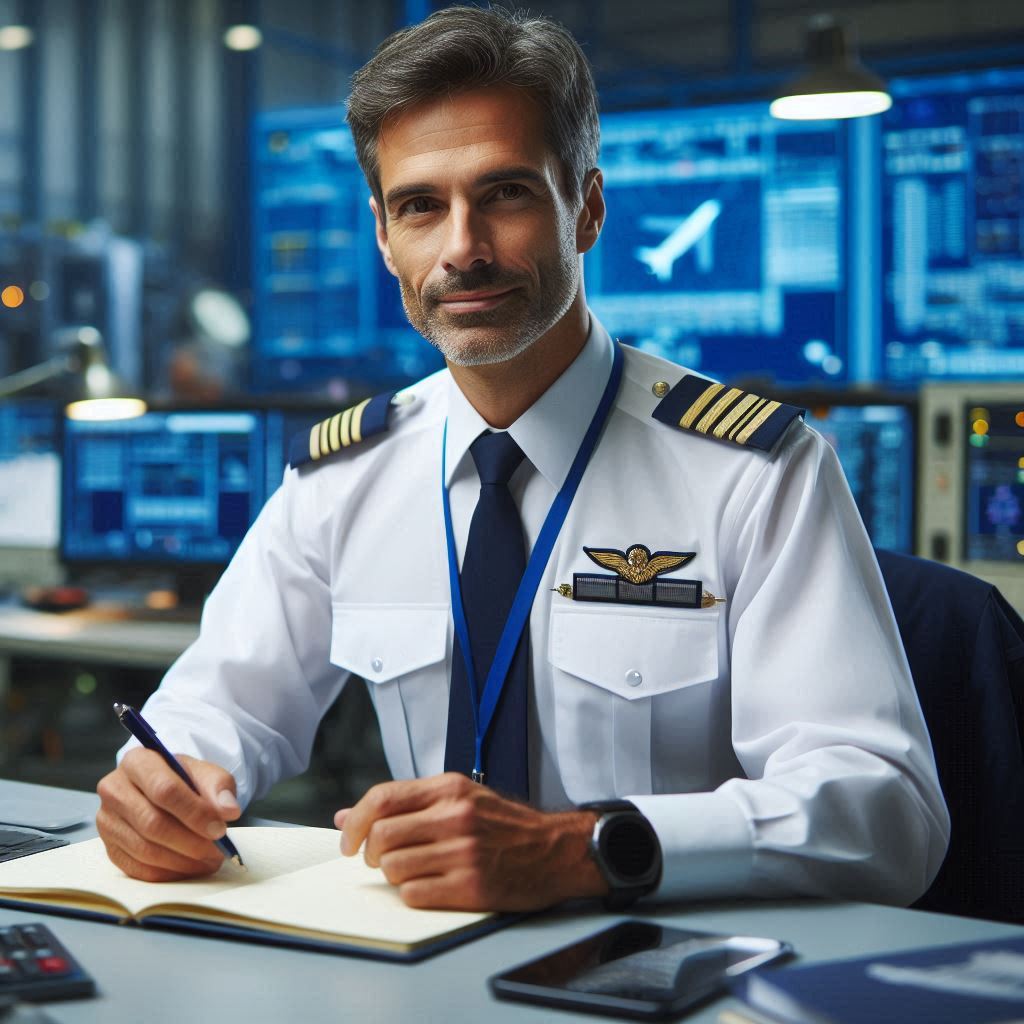Introduction
Aerospace engineering plays a pivotal role in shaping the future of technology and transportation.
This field is at the forefront of innovations that redefine how we connect, travel, and explore.
By developing cutting-edge technologies, aerospace engineers drive advancements that significantly impact various industries and global infrastructure.
Currently, the aerospace industry is experiencing rapid advancements.
Engineers are focusing on improving aircraft efficiency, advancing space exploration, and implementing sustainable technologies.
Innovations such as electric propulsion systems, autonomous aircraft.
Reusable rockets are leading to more efficient and environmentally friendly transportation options.
These developments are not only enhancing flight safety but also reducing the carbon footprint of aviation.
The impact of aerospace engineering on society is profound.
It has revolutionized air travel, supported ambitious space missions, and spurred technological progress across multiple sectors.
Breakthroughs in materials science, propulsion systems, and avionics are making flights safer and more efficient.
Recognizing these trends is crucial for anticipating future technological shifts and preparing for their implications.
Aerospace engineers will continue to drive innovation, pushing the boundaries of what is possible.
Their work will shape the future of travel and exploration, making it essential to stay informed about these evolving trends.
Growth of Space Tourism
The concept of space tourism has been gaining traction in recent years, with several companies actively working towards making it a reality.
The idea of ordinary people being able to travel to space for leisure or research purposes is no longer just a distant dream but a potential future trend in aerospace engineering.
The Rise of Space Tourism as a Potential Future Trend in Aerospace Engineering
Space tourism is emerging as a significant trend in aerospace engineering.
It represents a new frontier in travel and exploration.
The idea of private citizens traveling to space, once considered science fiction, is becoming a reality.
Advances in technology and reduced costs are making space tourism increasingly feasible.
The concept promises to open space travel to a broader audience beyond professional astronauts.
This trend could revolutionize how people experience and interact with space.
How Companies Like SpaceX and Blue Origin Are Working Towards Making Space Travel Accessible to the Public
SpaceX‘s Contributions
SpaceX, founded by Elon Musk, is a major player in space tourism.
The company‘s ambitious goals include making space travel more affordable and frequent.
SpaceX‘s reusable Falcon 9 rockets reduce launch costs significantly.
The Starship spacecraft, currently in development, aims to carry humans to space and beyond.
SpaceX has already announced plans for private spaceflights, including trips around the Moon.
These innovations make space tourism more attainable for the public.
Blue Origin‘s Initiatives
Blue Origin, founded by Jeff Bezos, is also advancing space tourism.
The company‘s New Shepard spacecraft is designed for suborbital flights.
These flights offer a brief but thrilling experience of weightlessness and space views.
Blue Origin focuses on making space travel accessible for tourists and researchers.
The company has successfully conducted multiple test flights and plans to start commercial operations soon.
Blue Origin‘s approach emphasizes safety and passenger experience, making space tourism more approachable.
Technological and Logistical Challenges
Both SpaceX and Blue Origin face technological and logistical challenges.
Developing reliable and safe spacecraft is crucial for space tourism.
Companies must ensure that space travel meets high safety standards.
Additionally, they need to address the challenges of providing life support systems in space.
The cost of space travel remains high, though advancements in technology are gradually reducing it.
Ensuring that space tourism is accessible to a broader audience requires overcoming these hurdles.
Impact on Aerospace Engineering
The rise of space tourism is reshaping aerospace engineering.
Engineers must innovate to design spacecraft that are both safe and cost-effective.
This trend drives advancements in materials science, propulsion systems, and life support technologies.
The growing interest in space tourism also stimulates investments in space infrastructure.
As more companies enter the field, competition fosters further technological breakthroughs.
Space tourism is a burgeoning trend in aerospace engineering with the potential to transform space travel.
Companies like SpaceX and Blue Origin are at the forefront of making this dream a reality.
Their efforts to develop reusable rockets, safe spacecraft, and cost-effective solutions are paving the way for public space travel.
Despite technological and logistical challenges, the rise of space tourism represents a significant leap forward in aerospace engineering.
As technology evolves, space tourism may soon become a common experience, opening new possibilities for human exploration and adventure.
Advancements in Hypersonic Travel
As technology continues to advance at a rapid pace, one of the most exciting frontiers in aerospace engineering is hypersonic travel.
This concept involves traveling at speeds greater than Mach 5, which is five times the speed of sound.
The Concept of Hypersonic Travel and Its Potential to Revolutionize Air Travel
Hypersonic travel refers to speeds exceeding Mach 5, or five times the speed of sound.
This technology promises to revolutionize air travel by significantly reducing flight times.
Imagine flying from New York to London in under an hour this is the potential of hypersonic travel.
Hypersonic vehicles travel at incredible speeds, which could make global travel faster and more efficient.
The technology could also enhance access to space by reducing launch times and costs.
Hypersonic travel could transform military operations, enabling rapid response across the globe.
Ongoing Research and Development in Hypersonic Technology by Companies and Governments Around the World
Research and development in hypersonic technology are advancing rapidly.
Several companies and governments are investing heavily in this field.
The United States, China, and Russia are leading in hypersonic research.
In the U.S., the Defense Advanced Research Projects Agency (DARPA) is pioneering hypersonic research.
DARPA’s projects include developing new propulsion systems and materials to withstand extreme speeds.
The Hypersonic Test Facility at NASA is also crucial, testing vehicle designs and technologies.
China has made significant strides in hypersonic technology.
Russia is also at the forefront of hypersonic technology.
The Russian military has developed and deployed hypersonic missiles, showcasing the technology‘s potential in defense.
International collaborations and partnerships are fostering further advancements.
Countries and companies are sharing knowledge and resources to overcome technological challenges.
Collaborative efforts aim to accelerate the development and commercialization of hypersonic travel.
The challenges in hypersonic technology include developing materials that can endure high temperatures and pressures.
Engineers are working on innovative materials and cooling systems to address these issues.
Advancements in propulsion technology are also critical for achieving and maintaining hypersonic speeds.
Hypersonic travel, defined by speeds over Mach 5, has the potential to revolutionize air travel, making global journeys faster and more efficient.
Ongoing research and development by governments and private companies worldwide are driving progress in this exciting field.
The U.S., China, and Russia are leading hypersonic research, each making significant advancements.
Private companies like Boeing and Lockheed Martin are also contributing to the development of hypersonic technology.
Addressing technological challenges, such as extreme temperatures and propulsion systems, remains crucial.
Continued investment and international collaboration will accelerate the development and commercialization of hypersonic travel.
This technology promises to reshape the future of aviation and space exploration, making previously unimaginable feats possible.
Read: How to Become a Civil Rights Advocate
Sustainable Aircraft Design
As the aerospace industry continues to evolve, one of the key focuses is on sustainable aircraft design.
This is crucial in reducing the environmental impact of air travel and ensuring a greener future for the industry.
The Importance of Sustainable Aircraft Design in Reducing the Environmental Impact of Air Travel
Sustainable aircraft design is crucial for reducing the environmental impact of air travel.
The aviation industry contributes significantly to global carbon emissions.
Addressing this issue requires innovative approaches to aircraft design and technology.
Designing more efficient aircraft helps decrease fuel consumption and emissions.
Engineers focus on optimizing aerodynamics, improving fuel efficiency, and minimizing noise pollution.
Sustainable design practices also include using lighter materials to reduce aircraft weight and improve overall performance.
Incorporating renewable energy sources into aircraft design can further reduce environmental impact.
For example, integrating solar panels or other alternative energy sources into aircraft systems can lower reliance on fossil fuels.
Sustainable aircraft design not only benefits the environment but also enhances the industry’s long-term viability.
Regulations and industry standards increasingly emphasize sustainability.
Government policies and international agreements aim to reduce aviation emissions and promote green technologies.
Aerospace engineers must align with these standards to ensure their designs meet environmental goals.
Innovations in Electric and Hybrid Aircraft Technologies for a Greener Future
Electric and hybrid aircraft technologies represent significant innovations for a greener future.
These technologies aim to reduce or eliminate reliance on traditional jet fuels.
Electric aircraft use battery power or fuel cells to generate propulsion, while hybrid systems combine conventional engines with electric propulsion.
Electric aircraft offer several advantages, including lower emissions and reduced noise levels.
Advances in battery technology enhance the feasibility of electric aircraft for short-haul flights.
Engineers are developing more efficient batteries with higher energy densities to extend the range of electric aircraft.
Hybrid aircraft technologies provide a transitional solution by combining traditional and electric propulsion systems.
This approach allows for partial reduction in fuel consumption while maintaining performance and range.
Hybrid systems can help bridge the gap between conventional aircraft and fully electric solutions.
Government incentives and investments in green aviation technologies support the development of electric and hybrid aircraft.
Funding and research grants help accelerate the progress of these innovations.
Collaboration between industry leaders, researchers, and policymakers is essential for overcoming technical and regulatory challenges.
Engineers focus on enhancing fuel efficiency, using lighter materials, and incorporating renewable energy sources.
Adhering to environmental regulations and industry standards is essential for achieving sustainability goals.
Electric and hybrid aircraft technologies offer innovative solutions for a greener future.
Electric aircraft reduce emissions and noise, while hybrid systems provide a transitional solution.
Ongoing research and development, supported by government incentives, drive progress in these technologies.
The future of aerospace engineering lies in embracing sustainability and advancing green technologies.
By prioritizing sustainable design and investing in electric and hybrid innovations.
The aerospace industry can significantly reduce its environmental impact and pave the way for a more sustainable future in aviation.
Read: The Intersection: Architecture & Tech in Modern USA.
Transform Your Career Today
Unlock a personalized career strategy that drives real results. Get tailored advice and a roadmap designed just for you.
Start NowAutonomous Flight Systems
In the field of aerospace engineering, one of the most significant emerging trends is the development of autonomous flight systems.
These systems have the potential to revolutionize the way we think about air travel and aviation. Let’s delve into the details of this fascinating technology.
Development of Autonomous Flight Systems
Autonomous flight systems refer to the ability of aircraft to operate without direct human intervention.
These systems rely on advanced technology such as artificial intelligence, machine learning, and sensors to navigate the skies.
Engineers and researchers are constantly working to improve the capabilities of autonomous flight systems.
This includes enhancing the accuracy of navigation, improving collision avoidance technology, and integrating autonomous features into traditional aircraft designs.
Impact on Aviation Safety and Efficiency
One of the primary advantages of autonomous flight systems is the potential to significantly improve safety in aviation.
By removing human error from the equation, these systems can reduce the risk of accidents and improve overall safety standards.
Autonomous drones and aircraft can also enhance efficiency in aviation operations.
These systems have the ability to optimize flight paths, reduce fuel consumption, and streamline air traffic control processes.
This can lead to cost savings for airlines and a more sustainable approach to air travel.
Benefits of Autonomous Flight Systems
- Enhanced safety by reducing the risk of human error
- Improved efficiency through optimized flight paths
- Cost savings for airlines and passengers
- Reduced environmental impact through fuel consumption optimization
Overall, the development of autonomous flight systems represents a significant advancement in aerospace engineering.
As technology continues to evolve, we can expect to see even greater improvements in safety, efficiency, and sustainability in the aviation industry.
It is clear that the future of aerospace engineering is heading towards a more autonomous and technologically advanced era.
By embracing these innovative solutions, we can pave the way for a safer, more efficient, and sustainable aviation industry.
Read: Economic Indicators and Their Influence on US Architects

Space Exploration Technologies
In recent years, there have been remarkable advancements in space exploration technologies that are shaping the field of aerospace engineering.
From propulsion systems to spacecraft design, the future of aerospace engineering looks promising.
The Latest Trends in Space Exploration Technologies, Including Advancements in Propulsion Systems and Spacecraft Design
Recent trends in space exploration technologies are pushing the boundaries of what is possible.
Advancements in propulsion systems are a major focus.
New propulsion methods, like electric and nuclear propulsion, offer higher efficiency and faster travel.
Electric propulsion uses ion or Hall-effect thrusters to provide continuous thrust with less fuel.
This technology is ideal for deep-space missions due to its efficiency.
Nuclear propulsion, on the other hand, promises significant improvements in speed and power.
It can drastically reduce travel time to distant planets.
Innovations in spacecraft design also play a critical role.
Modular spacecraft designs allow for more flexible and scalable missions.
These designs can be adapted for various mission profiles, from crewed missions to scientific research.
Additionally, advancements in materials science are leading to lighter, more durable spacecraft.
New composite materials and heat-resistant alloys enhance spacecraft performance and safety.
These materials withstand harsh space environments and high-speed reentries.
Together, these technological advancements are making space exploration more feasible and efficient.
How Future Missions to Mars and Beyond Are Shaping the Field of Aerospace Engineering
Missions to Mars
Future missions to Mars are a major driving force in aerospace engineering.
NASA‘s Artemis program aims to land humans on Mars by the 2030s.
This ambitious goal requires advancements in life support systems, habitat construction, and in-situ resource utilization.
Engineers are developing technologies to sustain life on Mars, including water extraction and habitat shielding from radiation.
Mars missions also drive innovation in propulsion systems.
Faster travel to Mars requires efficient propulsion to minimize crew exposure to space radiation and microgravity effects.
Technologies like advanced chemical rockets and nuclear thermal propulsion are being explored to achieve this.
Exploration Beyond Mars
Exploration beyond Mars is shaping the future of aerospace engineering.
Missions to the outer planets and their moons are on the horizon.
NASA‘s Europa Clipper mission, for instance, aims to explore Jupiter‘s moon Europa.
This mission will investigate the moon‘s ice-covered ocean for signs of life.
Spacecraft for these missions need to endure extreme environments and long-duration space travel.
The exploration of asteroids and comets is also gaining attention.
Missions to these bodies can provide insights into the early solar system and potential resources.
Developing spacecraft capable of landing on and sampling these objects requires new engineering approaches and technologies.
Impact on Aerospace Engineering
These future missions influence various aspects of aerospace engineering.
They drive the development of new materials, propulsion systems, and spacecraft designs.
Engineers are also focusing on autonomous systems and artificial intelligence to handle the complexities of deep-space missions.
The need for reliable and efficient technologies fosters innovation and collaboration across the aerospace sector.
The latest trends in space exploration technologies, including advancements in propulsion systems and spacecraft design, are reshaping the field of aerospace engineering.
Missions to Mars and beyond drive these innovations, pushing engineers to develop new solutions for deep-space travel.
As technology evolves, future missions will continue to challenge and inspire advancements in aerospace engineering, opening new frontiers in space exploration.
Read: Post-Pandemic Design Trends: US Architects Adapt
See Related Content: Biomedical Engineering Job Market Insights
Collaborations with AI and Machine Learning
Artificial intelligence and machine learning play a crucial role in driving innovation in aerospace engineering.
These technologies have the potential to revolutionize the way aircraft are designed, built, and operated.
The Role of Artificial Intelligence and Machine Learning in Driving Innovation in Aerospace Engineering
Artificial intelligence (AI) and machine learning (ML) are driving significant innovation in aerospace engineering.
These technologies enhance the capabilities of aerospace systems and streamline engineering processes.
AI and ML algorithms process vast amounts of data to identify patterns and make predictions, leading to more efficient designs and operations.
AI improves decision-making by analyzing complex data sets faster than human capabilities.
It helps engineers design better systems and optimize performance.
Machine learning algorithms can predict potential issues before they arise, allowing for proactive solutions.
Showcase Your Business Today
Reach thousands of readers actively exploring professional services. Publish your business profile and grow your audience now.
Publish NowHow AI Is Being Used to Optimize Aircraft Design, Improve Navigation Systems, and Enhance Overall Performance
AI is transforming aircraft design by optimizing aerodynamic performance and structural integrity.
Engineers use AI algorithms to analyze design data and simulate various scenarios.
This process helps in identifying the most efficient designs and materials, reducing the need for physical prototypes.
In aircraft design, AI assists in creating advanced simulations that predict how designs will perform under different conditions.
Advanced algorithms process data from various sensors to improve navigation accuracy.
AI-powered systems adjust flight paths dynamically to optimize fuel consumption and avoid hazards.
In terms of flight operations, AI aids in managing and controlling aircraft systems.
It helps in automating routine tasks and monitoring system health.
AI-driven systems manage load distribution, aerodynamic control, and energy usage, leading to more efficient and reliable operations.
In space exploration, AI is used to control spacecraft and analyze mission data.
It assists in autonomous navigation, helping spacecraft reach their destinations with minimal human intervention.
AI algorithms also analyze data from space missions, providing valuable insights for future missions.
Artificial intelligence and machine learning are pivotal in driving innovation in aerospace engineering.
They enhance aircraft design, improve navigation systems, and optimize overall performance.
It improves navigation systems by providing real-time data analysis and decision-making support.
In flight operations, AI manages systems, predicts maintenance needs, and enhances performance.
In space exploration, AI aids in autonomous navigation and mission data analysis.
The integration of AI and ML technologies will continue to shape the future of aerospace engineering, leading to more advanced, efficient, and safe aerospace systems.
Conclusion
The future of aerospace engineering is poised for groundbreaking advancements that will reshape both aviation and space exploration.
Key trends include electric propulsion systems, which promise to reduce environmental impact and lower fuel costs.
These systems are set to make air travel more sustainable.
Autonomous aircraft are another significant trend, potentially enhancing flight safety and operational efficiency while reducing human error.
Additionally, reusable rockets are transforming space access by decreasing launch costs and enabling more frequent missions.
Thus paving the way for deeper space exploration and commercial opportunities.
These developments are not just technical milestones; they will profoundly affect how we experience transportation and space exploration in our daily lives.
Understanding these trends helps us grasp the future landscape of aerospace engineering and its broader implications.
To stay at the forefront of these exciting changes, readers should remain informed about the latest advancements in the field.
This awareness will deepen their appreciation of the industry’s role in shaping modern transportation and exploration.
Embracing these innovations not only enriches personal knowledge but also highlights opportunities to engage with and contribute to the evolving aerospace sector.
[E-Books for Sale]
The Big Book of 500 High-Paying Jobs in America: Unlock Your Earning Potential
$19.99 • 500 High-Paying Jobs • 330 pages
Explore 500 high-paying jobs in America and learn how to boost your career, earn more, and achieve success!
See All 500 High-Paying Jobs of this E-Book
1001 Professions Without a Degree: High-Paying American Jobs You Can Start Now
$19.99 • 1001 Professions Without a Degree • 174 pages
Discover 1001 high-paying jobs without a degree! Unlock career tips, skills, and success strategies for just $19.99!




